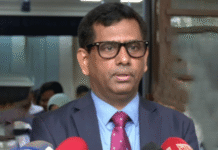Recruit necessary staff, make it functional

While we commend the government for its efforts to make healthcare accessible to all by establishing healthcare facilities even in remote places of the country, what we often notice is that many healthcare facilities remain unutilised mostly due to a shortage of manpower including doctors. According to a report published in this daily on March 14, a 20-bed hospital in the remote Jagdal union of Sunamganj’s Derai upazila has been lying idle for 6 years because the authorities have not yet sanctioned the necessary workforce to get the facility running. According to the local lawmaker, the manpower allotment for the hospital was delayed due to bureaucratic tangles. Meanwhile, the hospital compound has become a safe haven for drug addicts and gamblers, and all kinds of garbage are being dumped in the adjacent areas polluting the environment.
Although the number of government healthcare facilities has increased across the country, their services have not improved due to the shortage of doctors and necessary equipment. Many reports have been published in this daily over the years depicting the dismal picture of our public hospitals and upazila health complexes. According to Bangladesh Health Facility Survey (BFHS) 2017, only 28 percent of health facilities in the country have six basic equipment like thermometers, stethoscopes, blood pressure gauge, weighing scales for infants and adults, and torchlights. And then there are hospitals like the one in Sunamganj which never get functional at all.
Since Derai upazila is a remote area surrounded by waterbodies, it is difficult for the villagers to go to the nearest upazila health complex for treatment. The situation becomes particularly dangerous in case of an emergency, because it takes long time to reach there from the villages due to poor road connectivity. Given the situation, it is important to make the hospital functional. The bureaucratic complexities mentioned by the local lawmaker should be removed and necessary manpower, including doctors, nurses, pharmacists, and medical technologists, should be recruited immediately. Once functional, the hospital can serve more than 50,000 people living in the three unions of the upazila.









